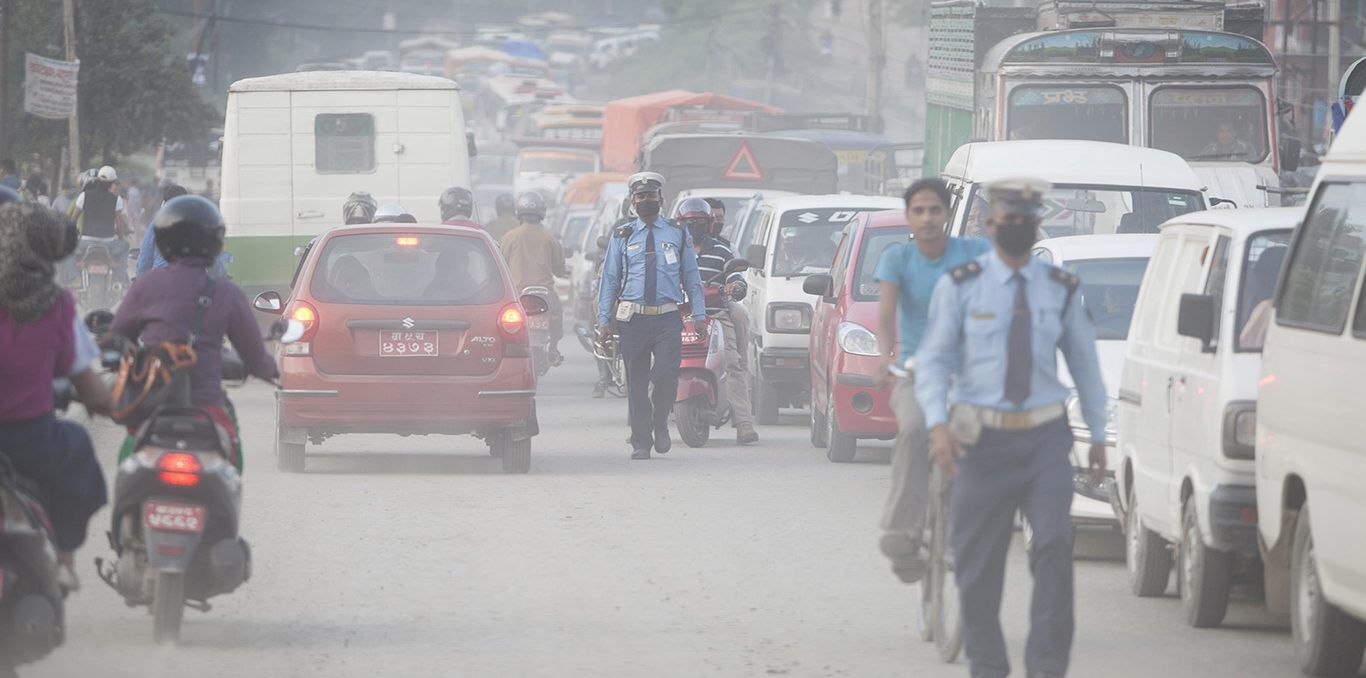
Kathmandu: Nepal’s Ministry of Health and Population has advised the public to take precautions as air pollution levels remain unhealthy throughout the week. The ministry’s statement highlights that Nepal has recently been ranked among the world’s most polluted countries based on the Air Quality Index (AQI). With the AQI in Kathmandu reaching 348, classified as “hazardous,” the Ministry of Health and Population (MoHP) has particularly urged children, the elderly, pregnant women, and individuals with chronic illnesses to exercise extra caution.
The MoHP has recommended that people stay indoors unless absolutely necessary, wear masks when outside, and avoid heavily polluted areas. Ministry Spokesperson Prakash Budhathoki emphasized the need for vulnerable groups—such as children, the elderly, pregnant women, and those with respiratory conditions—to be especially careful.
The AQI categorizes air quality as follows: 0-50 is “good,” 51-100 is “moderate,” 101-150 is “unhealthy for sensitive groups,” 151-200 is “unhealthy,” 201-300 is “very unhealthy,” and above 301 is “hazardous.” Currently, Kathmandu’s AQI is 348, firmly placing it in the “hazardous” category.
The National Disaster Risk Reduction and Management Authority (NDRRMA) has linked the rise in pollution levels to forest fires, road construction, and industrial activities. The authority has called on citizens, industries, and construction companies to take proactive measures to reduce emissions and protect public health. It also directed relevant agencies to monitor air quality closely and implement urgent actions to address the situation.
In recent weeks, air pollution in the Kathmandu Valley has noticeably worsened, becoming both visible and physically impactful.
Pollution comprises harmful chemicals and fine particulate matter. While larger dust particles are typically filtered out in the upper respiratory tract, smaller particles, such as PM2.5, can penetrate deeper into the lungs, leading to asthma, respiratory infections, and chronic conditions. This can result in acute asthma attacks, fainting, or dangerously low oxygen levels. Beyond respiratory issues, air pollution weakens the immune system, making individuals more susceptible to pneumonia and other illnesses.
Toxic pollutants such as nicotine, cadmium, nitrogen dioxide, and sulfur dioxide can enter the bloodstream, affecting vital organs—including the heart, kidneys, and brain—and increasing the risk of cancer and paralysis. High pollution levels also pose threats to unborn children in pregnant women.
During winter months, cold air traps pollution in the valley, creating a “blanket effect” that prevents proper air circulation. Pollution levels tend to peak in the morning and evening, exacerbated by seasonal fires, urban activities, and other factors.
The Ministry of Health states that air pollution causes about 42,000 deaths annually in Nepal, with 19% of those being children under five and 27% individuals over 70. Data indicates that air pollution has reduced the average life expectancy of Nepalis by 4.1%.
Nepal’s air quality significantly exceeds the World Health Organization’s safe air standards, highlighting a growing public health crisis.
In response, the NDRRMA has urged relevant sectors to take action to reduce pollution, including effective waste management, dust control during construction, and efforts to manage forest fires. Citizens are encouraged to wear masks, minimize outdoor activities, and adhere to health safety recommendations as authorities attribute the surge in pollution to factors such as forest fires, road construction, industrial activities, and increasing seasonal heat.
